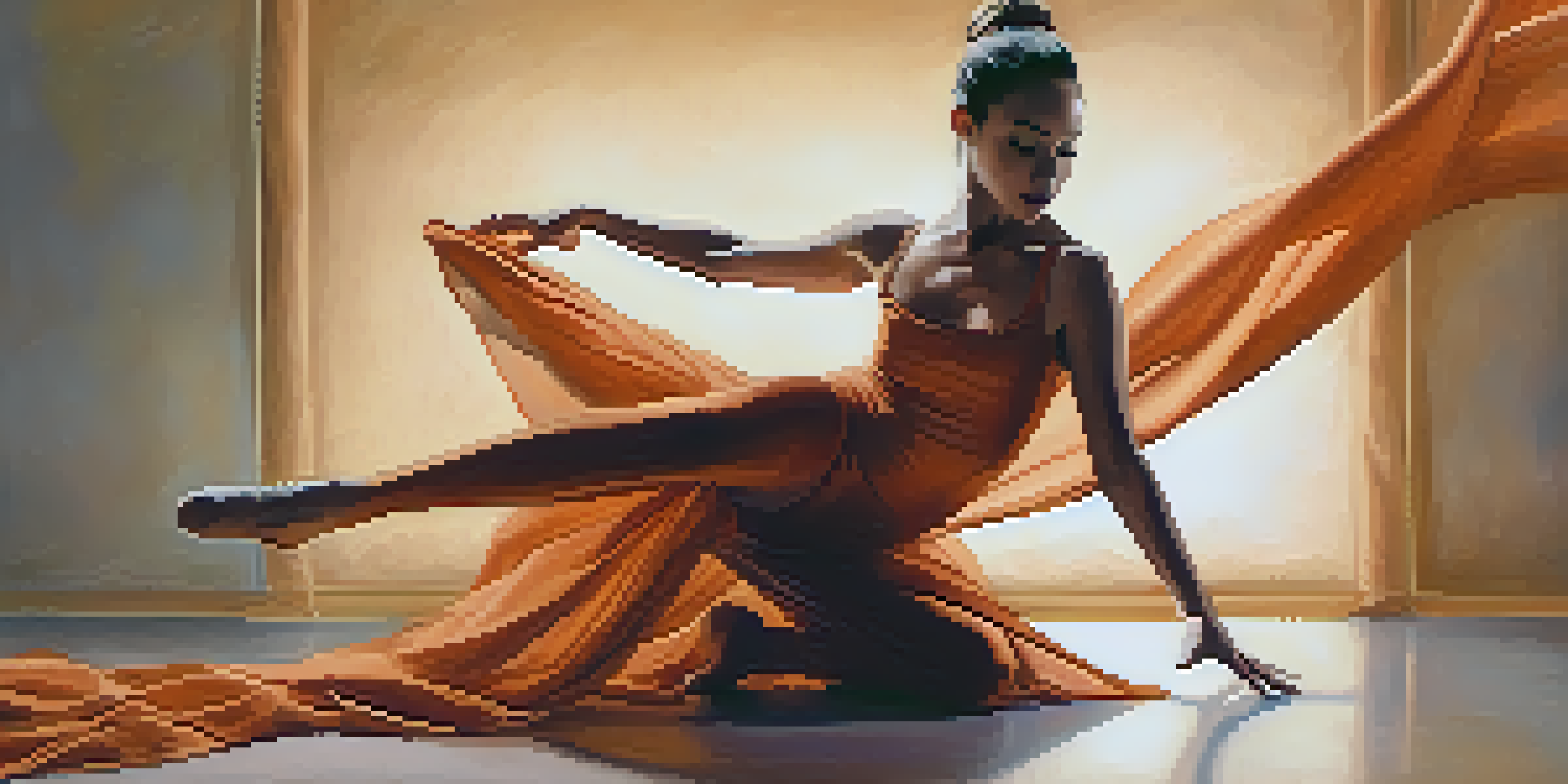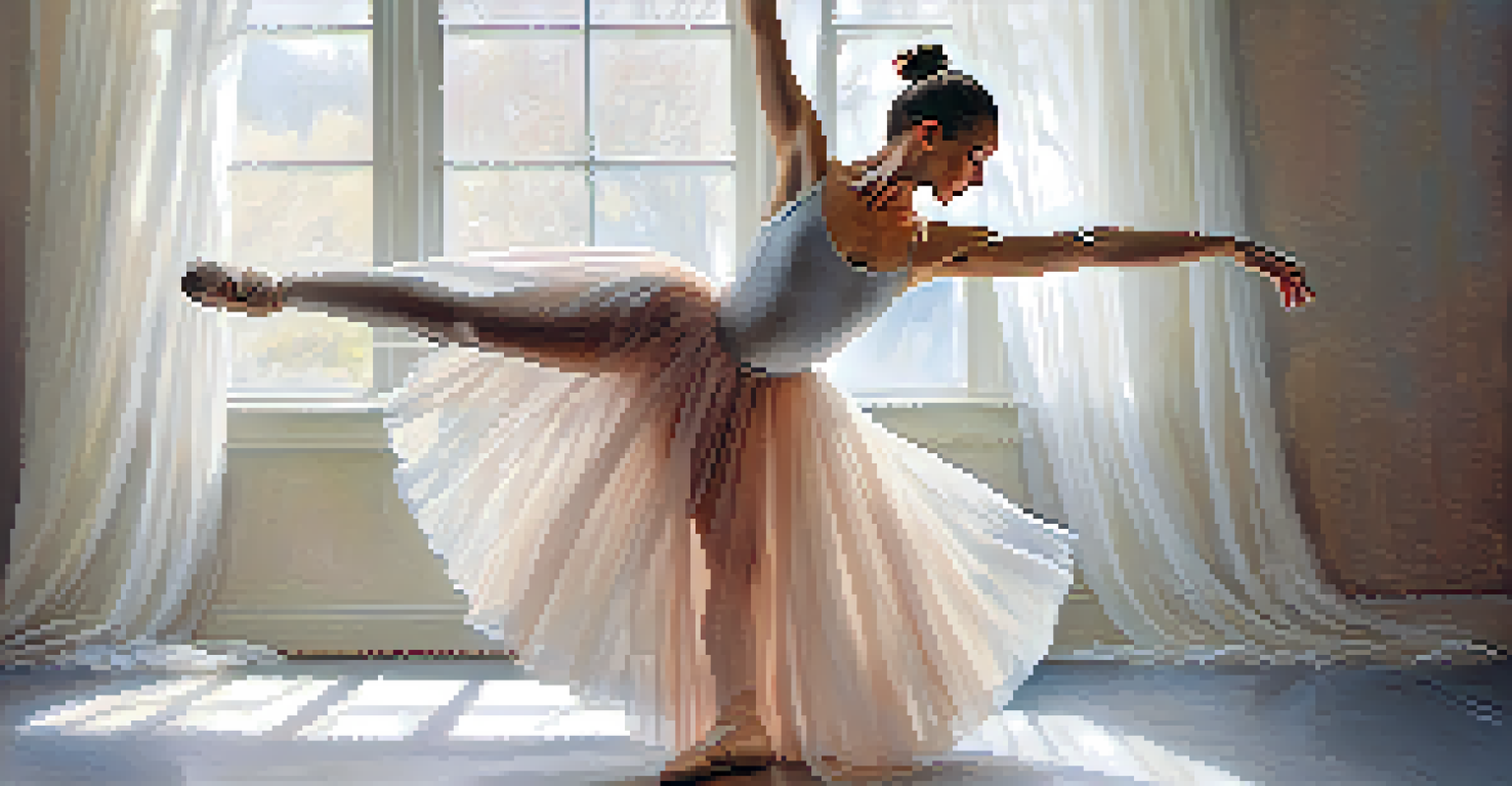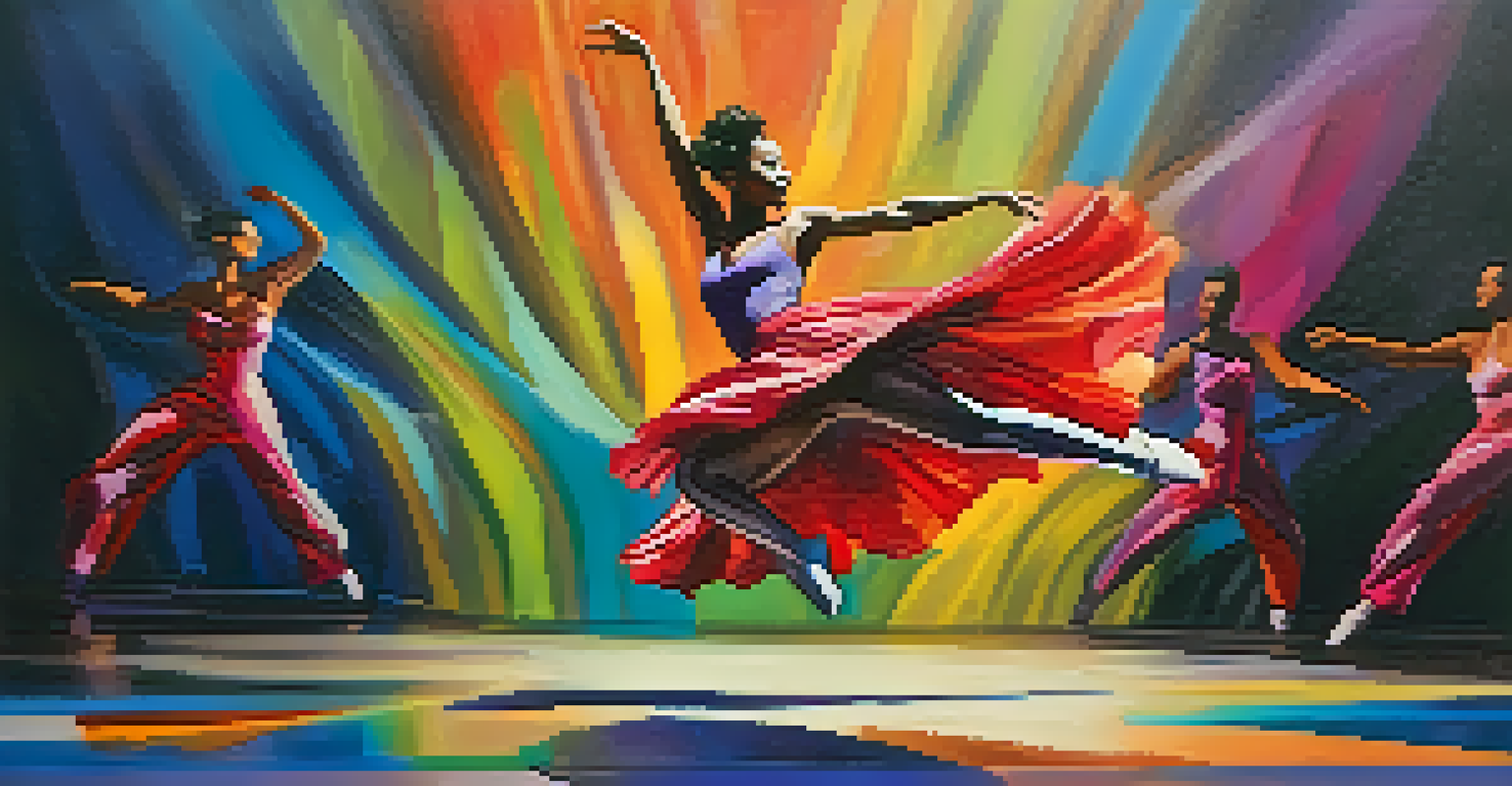Costume Materials: Choosing the Right Fabric for Dance

Understanding Dance Costume Fabrics: An Overview
When it comes to dance costumes, the fabric choice can make or break a performance. Different dance styles require different types of materials, each offering unique properties that affect movement and comfort. Understanding these fabrics is essential for both dancers and choreographers alike.
Dance is the hidden language of the soul.
For instance, ballet often utilizes lightweight, flowy fabrics like chiffon or tulle, which enhance grace and fluidity. On the other hand, hip-hop dancers may prefer cotton or spandex blends that provide durability and stretch for energetic movements. Identifying the right fabric starts with knowing the specific demands of the dance style.
Ultimately, the right fabric not only contributes to the aesthetic appeal of the costume but also supports the dancer’s performance. A well-chosen fabric can improve flexibility, reduce distractions, and boost confidence on stage.
The Importance of Fabric Stretch and Flexibility
One of the key factors to consider when choosing fabric for dance costumes is stretch and flexibility. Dancers need materials that move with their bodies, allowing for full range of motion without restrictions. Fabrics like spandex and Lycra are popular choices due to their excellent stretch properties.

For example, a contemporary dancer performing intricate floor work will benefit from a costume made of stretchy fabric that hugs the body while allowing for expansive movements. Conversely, a rigid fabric could hinder performance, leading to discomfort or even injury.
Fabric Choice Impacts Performance
Selecting the right fabric enhances a dancer’s movement, comfort, and confidence on stage.
Remember that not all stretch fabrics are created equal. It's crucial to test how the fabric interacts with different movements, ensuring it provides both support and freedom to express through dance.
Choosing the Right Weight for Dance Fabrics
The weight of the fabric is another critical consideration when selecting dance costumes. Heavier fabrics may provide warmth and structure, but they can also restrict movement, making them less ideal for certain dance styles. Conversely, lighter fabrics can enhance fluidity but may lack the necessary durability for rigorous routines.
The only way to make sense out of change is to plunge into it, move with it, and join the dance.
For example, a jazz dancer might prefer a mid-weight fabric that balances comfort and performance, allowing for energetic jumps and turns while still maintaining shape. Conversely, a ballroom dancer might opt for heavier fabrics that create dramatic lines during spins and turns.
Ultimately, the weight of the fabric should complement the dance style being performed, ensuring that the dancer can move freely while also feeling secure in their costume.
Texture Matters: Smooth vs. Textured Fabrics
The texture of the fabric can significantly impact both the dancer's experience and the visual effect of the costume. Smooth fabrics like satin or silk can create a polished look, while textured materials such as sequined or crushed velvet can add depth and interest to the costume.
For example, a modern dance piece utilizing flowing movements may benefit from smooth fabric that catches the light beautifully, enhancing the overall aesthetic. In contrast, a theatrical performance might call for textured fabrics that create a more dramatic and eye-catching effect.
Stretch and Flexibility Are Key
Fabrics with good stretch and flexibility allow dancers to perform without restrictions, supporting their full range of motion.
When selecting fabric, consider how the texture will interact with the lighting and movement on stage. The right texture can elevate a costume from ordinary to extraordinary.
Color and Print: Setting the Right Mood
Color and print are essential elements when designing dance costumes, as they can convey emotions and themes of a performance. Bright, bold colors can energize a dance piece, while softer hues may evoke feelings of grace and tranquility. Additionally, prints can add personality and uniqueness to a costume.
For instance, a lively tap dance performance might call for vibrant colors and fun patterns to match the upbeat rhythm. Conversely, a lyrical piece may benefit from pastel shades and flowing prints that reflect the song's emotional depth.
Ultimately, the choice of color and print should align with the overall vision for the performance, enhancing both the dancer's expression and the audience's experience.
Care and Maintenance of Dance Costume Fabrics
Once you've selected the perfect fabric for your dance costume, it's crucial to consider its care and maintenance. Different materials require specific cleaning methods, and neglecting to follow these can lead to damage or wear over time. Understanding how to care for your fabric will ensure longevity and performance quality.
For example, delicate fabrics like chiffon may require hand washing and careful drying, while sturdier materials like cotton can often withstand machine washing. Always check the care label and follow the instructions to maintain the fabric's integrity.
Consider Weight and Texture Wisely
The weight and texture of the fabric affect both the aesthetic and functionality of dance costumes, influencing the overall performance.
Regular maintenance not only keeps the costume looking fresh but also ensures that it performs well during rehearsals and performances. A little care goes a long way in preserving the beauty and functionality of dance costumes.
Budgeting for Dance Costume Fabrics
Budgeting is an essential part of the costume design process, especially when it comes to selecting fabrics. High-quality materials often come with a higher price tag, but investing in the right fabric can enhance both the dancer's performance and the overall look of the costume. Balancing quality with budget is key.
For instance, while it might be tempting to opt for cheaper fabrics, they may not provide the same level of comfort, stretch, or durability. As a result, dancers may find themselves needing to replace costumes more frequently, ultimately leading to higher costs.

Setting a budget that allows for quality fabrics is crucial. Consider sourcing materials during sales or looking for fabric remnants to stretch your budget without sacrificing quality.
Final Thoughts: Finding the Perfect Fabric
Choosing the right fabric for dance costumes is a multifaceted process that requires careful consideration of various factors. From stretch and weight to texture and color, each element contributes to the overall performance and aesthetic. Taking the time to explore different options can lead to a more fulfilling dance experience.
Whether you're a dancer, choreographer, or costume designer, understanding the impact of fabric on performance is essential. Engaging with the fabric in person, testing its flexibility, and visualizing it in motion can help streamline the selection process.
Ultimately, the goal is to find a fabric that not only looks stunning but also supports the dancer’s ability to express themselves fully on stage. With the right fabric, the possibilities for creativity and performance are endless.